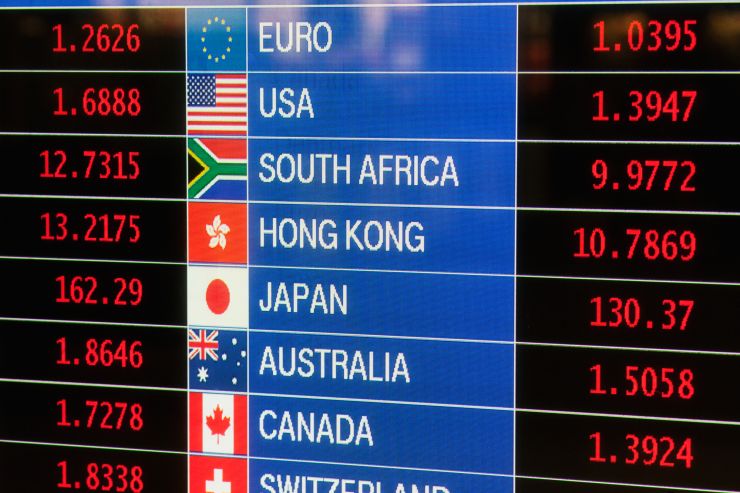
The best cash exchange rate is one that allows entrepreneurs doing business abroad to realize the anticipated profits. Currency price movements depend on factors beyond their control, and may have significant financial consequences on the profit margin of their transactions. Here are the factors that affect the exchange rate, and some solutions to protect his business.
What factors change the price of a currency?

What Is the Demand For Money? The Demand For Money Factor of Inflation Explained
The foreign exchange market fluctuates according to the decisions of international investors who prefer to hold one currency over another. Exchange rates therefore essentially obey the law of supply and demand, which depends on several factors. Here are the most important ones:
The stability and economy of the regions
If region A is stable and looks set for good growth, while the economic and political future of region B is more uncertain, investors will prefer to hold the currency of region A.
This factor explains why, often, when the global geopolitical situation is tense or when one fears a major international economic crisis, one sees increasing the value of the currencies considered as a refuge – mainly the American dollar.
Demand for products
If Region a products are in high demand around the world while Region B products are less in demand, buyers will want to hold more A currency to buy the products they want.
This factor explains the link between the strength of the Canadian dollar and the global demand for natural resources: since these resources account for a large share of Canadian exports, the Canadian dollar tends to increase in value as demand for natural resources increases. Natural and vice versa.
Interest rates
If interest rates in Region A are higher than interest rates in Region B, then international investors will prefer to invest in A’s currency.
Inflation rates
If the inflation rate is higher in Region A than in Region B, A’s currency will lose value more quickly. International investors will then prefer to hold B.’s currency.
This factor explains why, when inflation increases in a country, the value of its currency generally decreases.
How to predict the future rate of a currency?
These factors, however, are complex to analyze, because they sometimes play in the opposite direction and it is not easy to predict the trend that will dominate. Foreign exchange specialists in financial institutions strive to anticipate currency fluctuations, just as stock market investors strive to anticipate the performance of the shares of each publicly traded company. These expectations are sometimes wrong or exaggerated, which can lead to sudden corrections.
Some investors believe that, in the very long term, it is not necessary to consider currencies because upward and downward movements should more or less cancel each other out. This vision, while questionable, can defend itself in a very long-term perspective, as in the case of infrastructure investment abroad. In a more representative perspective of commercial transactions, in the short and medium term, currency fluctuations have a significant impact on the profit margin of companies that buy or sell abroad.
How can we protect ourselves against the fluctuation of the exchange rate?

4 ways to protect yourself from foreign-currency risk
To protect against market movements, an internationally traded entrepreneur must use the right tools .Here are three solutions available to businesses:
- The forward exchange transaction
This is the simplest and most used tool. It allows the foreign exchange rate to be fixed in advance in order to eliminate the risks associated with market fluctuations at 100%.
For example, an exporter expects to receive US $ 500,000 in three months. Since the costs of his project were set in Canadian dollars, if the US dollar loses value against the Canadian dollar during the three-month period, its profit may fade visibly. With the forward exchange transaction, the contractor sets the rate of conversion that will apply in three months, at the time of conversion.
- The exchange rate collar
A collar also provides protection against adverse market movements, while providing more flexibility. Rather than a fixed rate, this strategy offers a security zone determined by a floor rate and a ceiling rate.
For his transaction, the contractor could for example obtain protection that would guarantee a rate between 1.2500 and 1.3200 for a specific amount and date. So, if the markets are favorable to him, he will be able to benefit from it to a certain extent, while being protected in the event of an unfavorable movement.
- The currency option
This tool offers protection to the customer, without limiting its ability to benefit from a favorable market. It is very flexible and allows several combinations. The advantage is great for the contractor, and the contractor must pay a premium to acquire the option.
If a contractor is involved in a tender for a construction contract in the United States, for example, this solution is ideal. With the currency option, he is protected if he gets the coveted contract. Moreover, if he does not obtain the contract or the market is favorable to him at the time of the transaction, he has no commitment. In all cases, the contractor will only have to pay more than the value of the premium.
To find the right strategy, it is important to assess the risks involved. An expert can accompany you, from the analysis of the situation to the execution of the transaction.
Currency market developments can have significant negative consequences for companies operating abroad. A good understanding and an adapted hedging strategy are the key to success. To protect yourself, it is important to discuss your international development plans with your advisors before implementing them.




